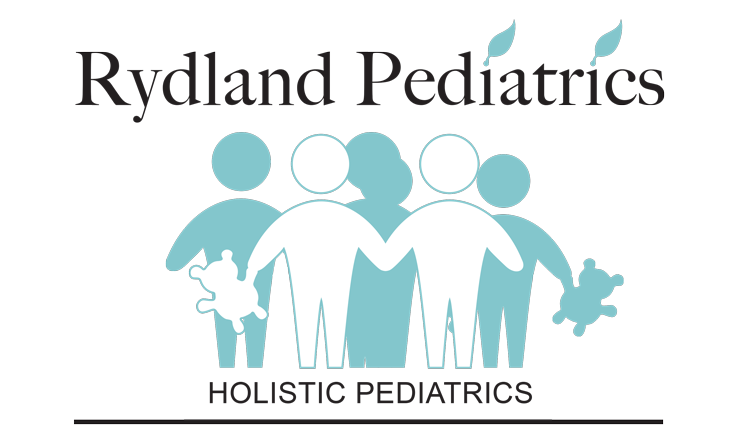Infantile Colic: Natural Treatments
- July 11, 2014
- Health and Wellness
COLIC The term colic is difficult to define, sometimes even having different meanings to different medical practitioners. The definition I use for colic is a condition consisting of frequent, prolonged (more than five hours daily) daily episodes of crying, lasting more than two weeks in otherwise healthy infants, usually less than three months old. The crying episodes do not respond to the usual measures used to calm babies such as feeding, burping, comforting, changing diapers, etc. Babies with colic usually will appear to be in pain and draw their legs up as if there are painful cramps somewhere in the stomach area. Colic is sometimes confused with a “fussy period”, occurring daily at the same time in either the evening or early morning hours. This fussy period may last for anywhere from two to five hours.
I believe this probably represents a period where the baby is “unwinding” from the stress he/she feels from his/her “work” during that day. (They are learning to adapt to a completely new environment, to regulate all their own body processes, and adapt to the new world they are experiencing; this may be stressful for some babies.) Although the treatment options discussed here are nearly always harmless for these fussy periods, and therefore certainly may be tried, they may or may not be effective for these episodes, and they will naturally go away in the next few months as your baby matures. Neither is colic an established medical condition. It is important, however, that a qualified physician perform a complete evaluation to be certain that there is no known underlying cause for the crying. Many conditions that are diagnosable and treatable may cause pain or discomfort in the newborn baby. A physician should carefully examine the child to make sure there is no physical reason for the crying, such as infections (e.g. ear infections, meningitis, sore throat, etc.), hernias, hair wrapped around a finger, toe or in the eye, etc.
Laboratory testing x-rays and other tests are rarely necessary, but may be performed in selected situations. Another situation, commonly confused with colic, is the baby who simply needs more of a parent’s time and attention. He or she will quiet when his or her needs are properly cared for, just needing to be held and played with more than other babies. If this is happening with your baby, it is helpful to remember that he or she was being held continuously in direct contact with mom for the nine months prior to birth and, therefore, might still have a continuing need for frequent physical contact. This need will diminish with time. One of the most frequent questions I am asked concerns whether babies who are held, loved or attended to too much will be “spoiled”. I believe that it is difficult, if not impossible, for an infant under twelve months to be spoiled by too much physical contact or the appropriate meeting of his or her needs.
WHAT CAUSES COLIC? Unfortunately, medical science has not yet conclusively discovered what causes colic. It has been suspected for quite some time, because of the way the typical baby draws up his or her legs on the abdomen, that there is pain somewhere in the abdominal or “stomach” area. This has led to typical home remedies and medications for gas and local treatments to the abdomen such as heat applications. Be aware that heat applications can be very dangerous if a baby falls asleep or is left for too long on the heat, causing local burns and overheating of the body. Ways to effectively get your baby to bring up stomach gas will be described later in this information.
The latest medical theory is that stomach contents back up or “reflux” into the esophagus, causing something similar to heartburn, in many babies with colic. Your doctor may either perform tests to check for this and/or prescribe treatments to control the acid production. I believe this is the wrong approach; we should attempt to address the cause. I see two things wrong with this “reflux” theory.
First, many babies without colic will have some physical evidence of reflux such as vomiting or spitting up, and may also have positive medical tests. If a baby is spitting up, the milk is obviously refluxing or coming back up from the stomach. Not all babies that reflux stomach contents up through the esophagus, therefore, have colic. In addition, not all babies that have colic spit up, or even test positively for reflux.
Second, although some babies who have colic will improve with medical treatment for reflux, not all will. In addition, it is my experience that the treatments used for reflux can lead to digestive conditions later in childhood. These may be difficult for both the parents and physicians to suspect, diagnose and treat. This is because it often requires specific comprehensive testing of the intestinal tract including many tests only performed at a few specialized labs.
At one time it was felt that emotional stress caused the baby to have an excess of nerve energy being expressed the only way that babies can–by crying. It may be helpful to do what you can to decrease stress in the home, but this has not been very useful in my experience for the management of colic. It is, however, frequently helpful to play soft relaxing music, or have some “white noise”, such as a fan running in the room nearby. Another useful tip is that many babies will temporarily get better or go to sleep in the car seat when they are taken for a car ride. The complimentary (commonly called “alternative”) physician will also consider other causes, such as food sensitivities (not typical “allergies” as diagnosed by a conventional allergist, but less severe symptoms related to eating or drinking specific foods), intestinal imbalances from abnormal amounts of certain bacteria, yeasts and parasites, and excessive accumulation of toxic chemicals absorbed from outside the body and/or produced within the body. Appropriate use of the services of other practitioners is helpful in many children with colic.
WHAT CAN BE DONE? The first step in caring for a baby with colic is to have a complete physical examination and all necessary tests performed by a competent physician or other health care provider in order to make sure that there is not a physical cause for the condition. We will next look at some details in the history commonly overlooked by conventional medicine such as:
DIETARY CONSIDERATIONS It is very important to completely evaluate the baby’s diet. If the baby is taking formula, is he or she taking too much? To calculate the proper amount of formula record the total amount of formula (in ounces) he or she takes in an average 24 hours period of time and divide this by his or her weight in pounds. If this number is greater than three ounces per pound (200 ml per kg.) your baby is taking too much milk. If the number is less than half of this amount, your baby is not taking enough milk. If he/she is taking too much, you should dilute the maximum daily amount of formula (three ounces per pound or 200 ml per kg.) with any necessary amount of water to satisfy your baby (never more than one ounce per pound or two ounces per kilogram daily of water). Water used to mix the formula should be either distilled water or water filtered through reverse osmosis, never plain tap water. If the daily amount of formula is too low you might consider speaking to your baby’s physician about changing the type of formula. Babies under four months old should never be taking any cereal or baby foods. If he or she is taking these, they should be stopped, unless they are mandatory for a specific medical condition. In addition, any baby vitamins should be stopped, especially if they contain fluoride. I temporarily stop all vitamins, even if they are completely natural, until the intestine is more mature–three to six months old.
Please note that I feel vitamins are very important and recommend strongly that all my patients take vitamins when they are taking formula, any foods, or are over six months of age. I do not recommend a baby take vitamins during the time he or she has colic, certain other intestinal conditions, or if he or she is exclusively breastfeeding and under six months old (nursing mothers should take vitamins). Formula fed babies will sometimes also respond to a change in formula, either to soy based, a predigested (“hypoallergenic”) formula, or goat milk. This is a medical decision best made by your child’s physician. Check with him or her as to whether formula change may be appropriate.
If a baby is breastfeeding, a dietary history of the mother must be taken. If you are nursing your baby, we would recommend you stop synthetic vitamins and try natural prenatal vitamins or even stop vitamins entirely (if this proves to be helpful) until the situation improves. There are certain foods in a nursing mother’s diet highly associated with her baby having colic. These include dairy products, (cow milk related products such as cow milk, cheese, ice cream, cottage cheese, yogurt, cream cheese, sour cream, etc.), which I first recommend eliminating from the mother’s diet as this is a very common contributor to colic: caffeine containing foods, sugar and artificial sweeteners, garlic, onions, broccoli, cauliflower, soybeans and beans. I also recommend she stop any foods which bother her in any way and anything she takes in excess. All dietary changes should be continued for at least two and preferably three weeks to see if they are helpful. There are, of course, many other foods in the mother’s diet which may cause a nursing baby to have colic. If the above changes are not helpful, a blood test on the mother may be performed to determine her food sensitivities. This has been correlated, in our experience, with many babies’ colic symptoms. Testing is performed by using tests such as an “IgG RAST” or “ALCAT” test and is available through many doctors and labs. Other testing may be performed by “alternative” practitioners, such as kinesiology (muscle testing). This is especially helpful if there is a family history of allergies and/or if the mother herself has a history of allergies.
INTESTINAL IMBALANCES Another possible cause is an imbalance in intestinal flora (bacteria, parasites and yeasts). If the mother has had a history of having had (at any time in her life) one or more episodes of vaginitis (especially if due to yeast), breast related symptoms while breast feeding any of her children (e.g. sore nipples after the first ten days, pain, burning or itching anywhere in the breast tissue, mastitis (breast infection) and/or “plugged ducts”), or any history of antibiotics during the pregnancy or during labor her baby is at a higher risk for intestinal imbalances. Baby symptoms include thrush (white spots caused by yeast on the cheeks, lips or roof of the mouth), any consumption of antibiotics during his or her life, “itchy tongue” (a tendency of a baby to tongue thrust in a motion which seems to “scratch” the tongue with the baby’s gums), skin rashes such as eczema or cradle cap, and/or diaper rashes which require antifungal medication (medicine against yeast). Further information on this subject is available upon request.
MY TREATMENT OF COLIC I will then demonstrate proper methods of burping the baby. This can be done in three ways, always putting some firm, but gentle pressure on the abdomen (stomach). Your baby can be put over your shoulder with the abdominal area, not the head, on top of the shoulder to put pressure on the stomach, gently patting or rubbing the back. He or she can also be placed face down on one leg, with the stomach on the leg and patting or rubbing the back. The third way is to have him or her sit on your leg holding the chin up and putting pressure on the stomach with one hand on the front of your baby and treating the back with the other hand as above. Whatever position you choose, continue burping your baby for five to ten minutes or until sufficient air is brought up. We would also recommend you try the dietary changes mentioned above for a period of at least two to three weeks. Typically, the specific problem food(s) needs to be eliminated for at least two weeks to be completely cleared out of the body. Following this diet change, if your baby continues with colic symptoms, we would recommend that he/she take the following natural medications (to know whether or not a specific treatment is effective it should be tried for at least one week). You may wish instead to both change the diet and begin the natural products at the same time.
Since the products are natural there is very little, if any, probability that the treatments will cause any side effects. The only problem in proceeding with both at the same time, then, is that you don’t know what is helping. For most people, though, this is not important. Our natural treatment program is as follows:
1. A trial of alcohol-free herbal support formulas containing herbs such as dill, chamomile, fennel, catnip, angelica, ginger, and slippery elm every three to four hours. These herbs, in varying combinations have been shown to be effective in both helping with the symptoms of colic and healing the intestinal tissues. This may be given directly in the mouth or mixed in small amounts of breast milk, formula, or water. Some preparations are pleasant enough that they should be easy to give directly by mouth.
2. Primal Defense, a combination of several different strains of naturally occurring bacteria designed to support the proper balance of healthy or beneficial intestinal bacteria, in the dose of ¼ teaspoon three times daily. This is given to deal with the possibility of intestinal imbalances and to promote better digestion. It may either be placed in the mouth and followed by a formula/breast milk feeding or mixed in a small amount of water, formula or breast milk. This supplement, unlike many others, does not need to be refrigerated. It also has little taste. It is often helpful in addition, and I usually recommend an herbal combination to deal with excessive yeast or disease causing bacteria. Herbs helpful for these difficulties may include extracts (alcohol-free) of citrus seed, Oregon grape root, uva ursi, black walnut hulls and others.
3. Homeopathic remedies may include: Colocynthis (better from firm pressure on the abdomen), Magnesia phos. (better from warmth and from gentle pressure on the abdomen), Bryonia (irritable and worse from the least movement), Chamomilla (cranky and “impossible”; when given what he wants he/she still cries and others). You may find several combination remedies at health food stores containing some of these. Usually I recommend you start with lower potencies, such as 6C, up to possibly 30C, the lower potencies may be repeated every 15-30 minutes. For more advanced treatments you may wish to consult with a classical homeopath. If symptoms continue after the recommended natural treatment, we will then recommend a trial of liquid simethicone (available at pharmacies) 30-40 milligrams three or four times daily, or an herbal combination called gripe water (available at Chinese, Indian or Jamaican groceries) 1/4 to1/2 teaspoon three to four times daily.
Other options when our treatment program is not working are to test for food sensitivities as mentioned above. Other typical medical treatments are directed at controlling the pain or intestinal spasms with medication. Medications will sometimes work but they don’t ever address the cause of the condition and add unnecessary chemicals to your baby’s body. I will rarely recommend these treatments and try, whenever possible, to take babies off of them if they are already using them. If your child is taking any medications you may wish to check with your doctor, nurse practitioner or pharmacist to see if you need to taper or slowly eliminate the medication. Finally, other effective measures you may wish to explore include chiropractic manipulations, infant massage therapy, craniosacral therapy and neuromuscular therapy performed by qualified practitioners. Remember, above all, that colic is a temporary condition and is not serious, if medical conditions have been properly ruled out. If you need help to handle the stress of a colicky baby (it is very stressful) we always recommend that you involve your support network (spouse, friend, relative, or trustworthy neighbor) to help you so that you don’t “reach your limit”. I find that the above recommendations will help most babies with colic. Whether you find relief or not, though, remember that colic will usually end around the time that your baby turns three months old.
Copyright 1999-2006, Eric N. Rydland, M. D., All rights reserved
Dr. Eric N. Rydland, graduated from the University of Miami undergraduate and School of Medicine in 1974 and 1978 respectively and completed his pediatric training at the University of Miami Affiliated Hospitals in 1981. He is pediatric board certified by the American Board of Pediatrics. During his nearly 30 years of clinical experience Dr. Rydland has researched and studied the holistic field and alternative treatments. Integrating these holistic treatments with traditional medical care based upon the wisdom only God can give, has given thousands of patients optimal health benefits. This has been achieved through work with many published authors in the alternative field, his experience, and devine wisdom. In addition to the kidsWellness products our site features other products he uses in his clinical practice. Dr. Rydland is a frequent guest on radio and television, speaker at medical seminars and public conferences, and a published author. He is the Founder and Developer of kidsWellnessTM Incorporated (October 1999)
Upcoming Events
- No Events
WHAT OUR PATIENTS ARE SAYING
Testimonial 1
How I wish I weren't writing this and that by some feat of providence we could have brought you with us to Texas – I don’t know if I’ll ever have the confidence and esteem for another pediatrician that I felt when consulting with you about Frank’s health. Thank you so much for being there when we needed you! Again thank you for everything!
Testimonial 2
Sheri, Hollywood
Sheri, Hollywood
Testimonial 3
Elizabeth, Miami Springs
Elizabeth, Miami Springs



